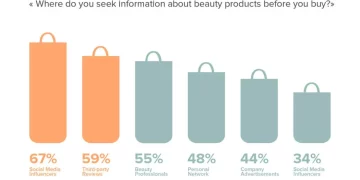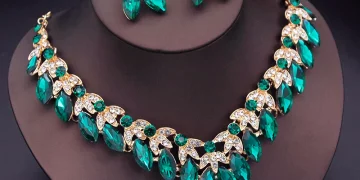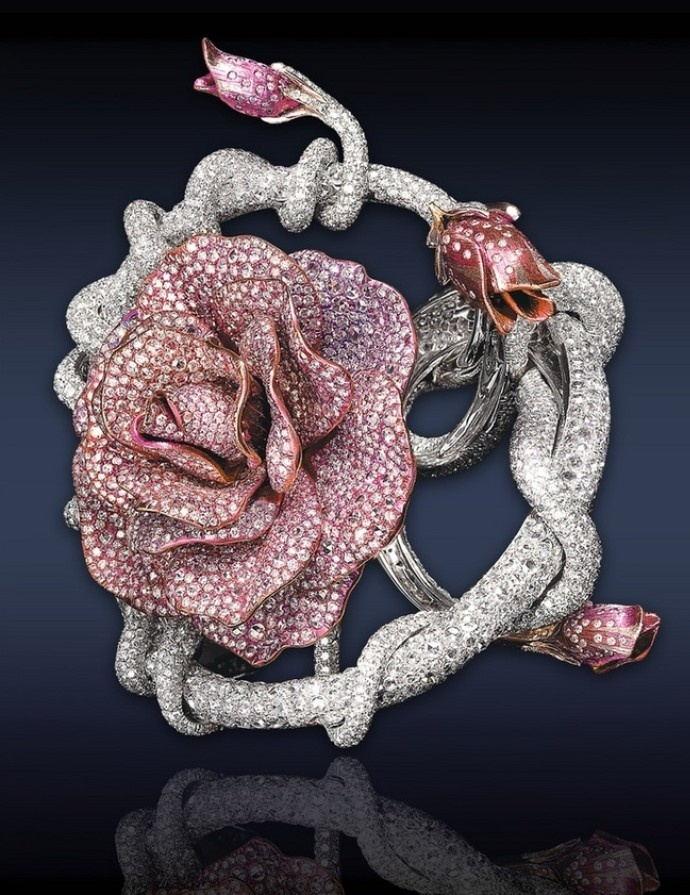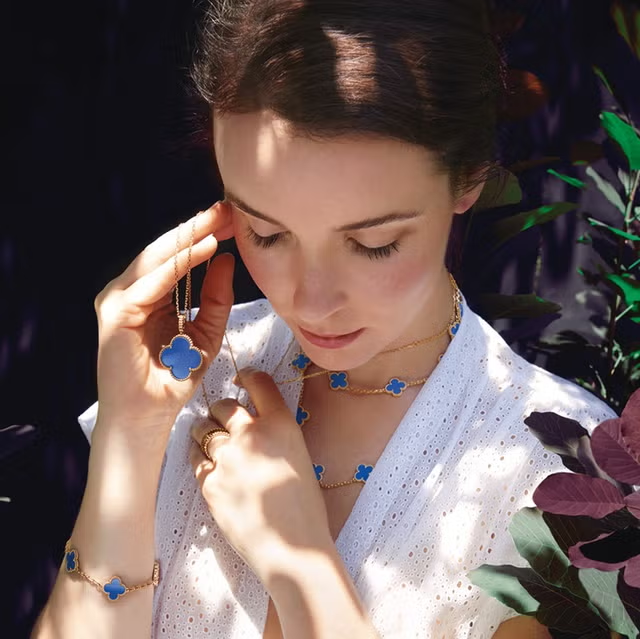Introduction
The jewelry industry has always been a reflection of cultural shifts, technological advancements, and consumer preferences. In recent years, one trend has captured the imagination of designers, collectors, and wearers alike: the resurgence of colored gemstones. From vivid sapphires and emeralds to rare spinels and tourmalines, these vibrant stones are redefining luxury, challenging the dominance of traditional diamonds, and reshaping the aesthetics of modern jewelry. This article explores how the growing demand for colored gemstones is driving stylistic innovation, altering consumer behavior, and influencing the future trajectory of the global jewelry industry.
1. The Rise of Colored Gemstones: A Historical and Cultural Context
To understand the current fascination with colored gemstones, it is essential to examine their historical significance and cultural symbolism.
1.1 A Legacy of Opulence
For centuries, colored gemstones have been synonymous with power, spirituality, and status. Ancient Egyptian pharaohs adorned themselves with lapis lazuli and carnelian, while Indian maharajas commissioned intricate pieces featuring rubies and emeralds. In Renaissance Europe, sapphires and pearls symbolized divine favor. Unlike diamonds, which gained prominence in the 20th century due to marketing campaigns, colored gemstones carry a rich, multicultural heritage that resonates with today’s consumers seeking authenticity and storytelling.
1.2 The Diamond Monopoly and Its Decline
The De Beers-led “A Diamond Is Forever” campaign in the mid-20th century cemented diamonds as the ultimate symbol of love and luxury. However, younger generations—particularly Millennials and Gen Z—are increasingly questioning this narrative. Ethical concerns (e.g., blood diamonds), environmental impact, and a desire for individuality have driven consumers toward alternatives. Colored gemstones, with their unique hues and ethical sourcing potential, have emerged as a compelling choice.
2. Design Innovation: How Colored Gemstones Are Reshaping Aesthetics
The versatility of colored gemstones allows designers to experiment with bold palettes, unconventional cuts, and mixed-media compositions.
2.1 Breaking Free from Minimalism
The 2010s were dominated by minimalist designs—think dainty diamond studs and sleek gold bands. Colored gemstones are now pushing the industry toward maximalism. Designers like Irene Neuwirth and Wendy Yue embrace oversized stones in gradient arrangements, creating pieces that double as wearable art. For example, Tiffany & Co.’s 2023 “Blue Book” collection featured paraiba tourmalines paired with peacock-hued sapphires, celebrating color saturation over subtlety.
2.2 Asymmetry and Organic Forms
Colored gemstones often exhibit natural imperfections, such as inclusions or uneven color zoning. Rather than hiding these traits, contemporary jewelers highlight them. Brands like Suzanne Kalan and Pomellato incorporate raw, uncut gemstones into asymmetrical designs, evoking a connection to nature. This trend aligns with the broader cultural shift toward sustainability and imperfection (see: wabi-sabi philosophy).
2.3 Cultural Fusion and Symbolism
Colored gemstones are also enabling cross-cultural design narratives. Indian jewelers like Nirav Modi blend Mughal-inspired motifs with Colombian emeralds, while African designers use locally sourced tanzanite to reinterpret tribal patterns. This fusion appeals to global consumers who value cultural diversity and craftsmanship.
3. Market Dynamics: Consumer Behavior and Industry Adaptation
The rise of colored gemstones is not just a stylistic shift—it reflects deeper changes in consumer priorities and industry practices.
3.1 The Quest for Personalization
Modern buyers view jewelry as an extension of their identity. Colored gemstones offer endless customization opportunities, from birthstones to bespoke color combinations. Online platforms like Gemist and Blue Nile now allow customers to design gemstone-centric pieces digitally, accelerating demand for unique creations.
3.2 Ethical and Sustainable Sourcing
Transparency is non-negotiable for today’s consumers. Colored gemstones, particularly those from traceable mines (e.g., Montana sapphires or Mozambican rubies), cater to this demand. Brands like Chopard and Boucheron have launched “Green Carpet” collections featuring Fairmined gold and responsibly sourced gemstones, appealing to eco-conscious buyers.
3.3 Investment Potential
High-quality colored gemstones are increasingly seen as alternative investments. Auction houses like Sotheby’s and Christie’s report record-breaking sales for rare stones, such as the 55.22-cat “Estrela de Fura” ruby ($34.8 million, 2023). This financial allure is attracting a new demographic of collectors and investors to the jewelry market.
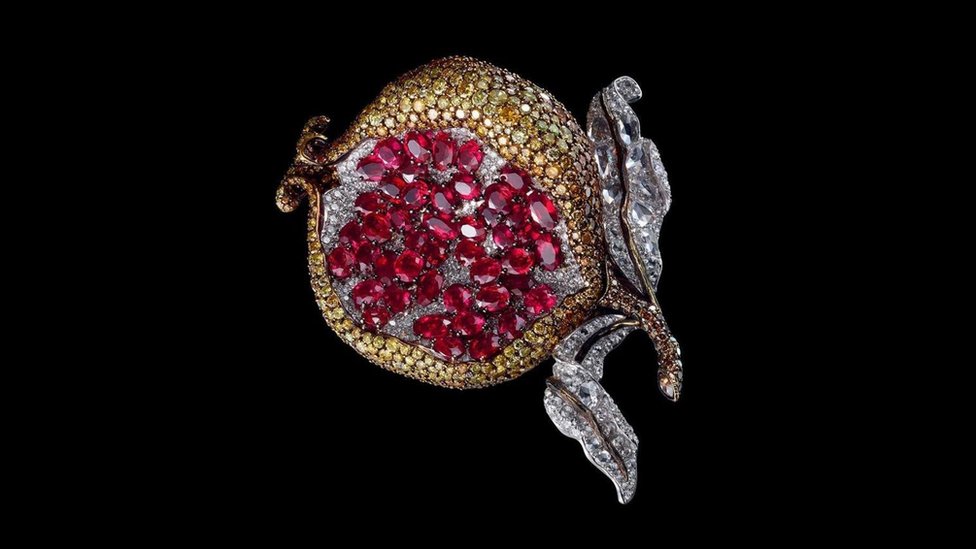
4. Challenges and Controversies
Despite their growing popularity, colored gemstones present unique challenges for the industry.
4.1 Supply Chain Vulnerabilities
Unlike diamonds, which have centralized mining and grading systems, colored gemstones are often sourced from small-scale, artisanal mines. This decentralization leads to inconsistent quality, ethical risks, and supply shortages. For instance, the 2022 political crisis in Myanmar disrupted ruby supplies, forcing brands to seek alternatives in Madagascar and Tanzania.
4.2 Standardization and Certification
The lack of universal grading standards for colored gemstones complicates consumer trust. Organizations like the Gemological Institute of America (GIA) are developing new certification frameworks, but progress is slow. Misleading terms like “pigeon’s blood ruby” remain contentious.
4.3 Cultural Appropriation Concerns
As Western brands incorporate non-European gemstone traditions (e.g., Native American turquoise or Australian opals), debates about cultural appropriation arise. Collaborations with local artisans and profit-sharing agreements are critical to addressing these issues.
5. The Future: Predictions and Emerging Trends
The colored gemstone boom shows no signs of slowing. Here’s what to expect in the coming decade:
5.1 Lab-Grown Colored Gemstones
Advances in lab-grown technology are democratizing access to rare stones. Companies like Diama and Chatham Created Gems now produce synthetic alexandrite and padparadscha sapphires, offering affordability without compromising aesthetics.
5.2 Digital Integration
Virtual try-ons and blockchain-based provenance tracking will become standard. For example, LVMH’s Aura blockchain platform is piloting gemstone traceability solutions, enhancing consumer confidence.
5.3 Gender-Neutral Designs
Colored gemstones are breaking gender norms. Unisex pieces featuring bold, geometric cuts (e.g., black opals set in titanium) are gaining traction, driven by brands like David Yurman and Bulgari.
Conclusion
The resurgence of colored gemstones represents more than a fleeting trend—it signals a fundamental reimagining of what jewelry can be. By blending historical reverence with modern ethics and technology, colored gemstones are fostering a new era of creativity and inclusivity in the industry. As consumers continue to prioritize self-expression, sustainability, and cultural authenticity, the influence of these radiant stones will only deepen, ensuring their place at the forefront of jewelry’s stylistic evolution.















